The 30 Best Places to Live in Oklahoma: Top Cities and Towns

Oklahoma offers residents a unique combination of affordable living costs, diverse communities, and strong economic opportunities across its varied landscape.
The state attracts families, professionals, and retirees seeking quality of life without the high expenses found in many other regions. From bustling metropolitan areas to charming smaller towns, Oklahoma provides options for different lifestyle preferences and budgets.
This comprehensive guide examines thirty communities throughout Oklahoma, evaluating factors such as housing affordability, employment opportunities, education quality, and local amenities to help potential residents make informed decisions.
The analysis covers major cities like Oklahoma City and Tulsa alongside smaller communities such as Verdigris and Miami, providing insights into what makes each location distinctive.
Economic trends and quality of life considerations further illuminate why Oklahoma continues to draw new residents from across the country.
Here are the 30 best places to live in Oklahoma:
30. Miami
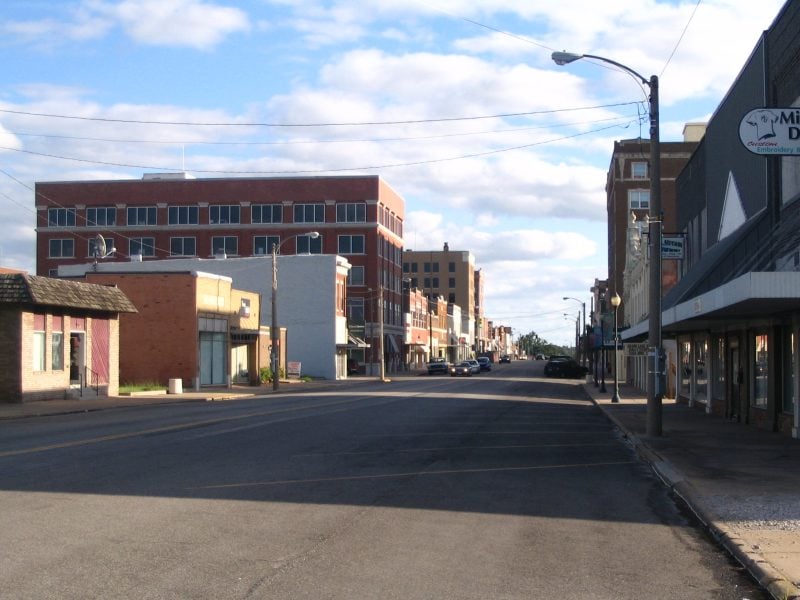
Miami sits in northeastern Oklahoma near the Kansas border with a population of 13,176 residents. The city serves as part of Ottawa County in what’s known as the Miami micropolitan area.
Housing costs remain affordable compared to many Oklahoma cities. Home prices fall below the state average of $161,319, making it accessible for first-time buyers.
The local economy centers on agriculture with textile industries providing additional employment opportunities. The broader micropolitan area supports nearly 60,000 people across the region.
Miami faces some economic challenges. The poverty rate reaches 22.9%, which exceeds the national average. The typical household earns $38,107 annually, below the national median of $67,500.
The city offers small-town living with access to plains and river landscapes. Residents benefit from lower housing costs while living in a community with Midwestern hospitality and agricultural roots.
29. El Reno
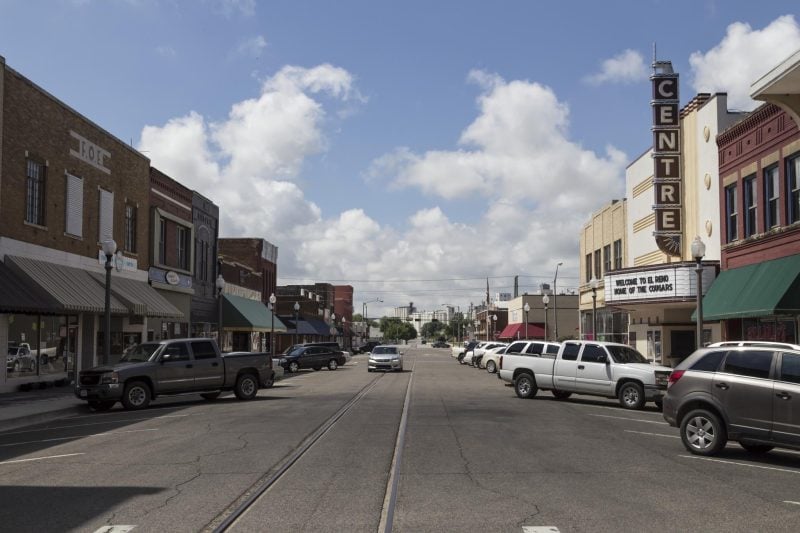
El Reno offers residents an affordable place to call home in Canadian County. The median home price sits around $130,000, making it significantly less expensive than many Oklahoma communities.
The city provides a rural atmosphere while maintaining proximity to Oklahoma City. Most residents own their homes in this community of nearly 18,000 people.
Families appreciate the above-average public school system. The cost of living runs approximately 10% below the national average, attracting both young families and retirees.
El Reno’s residents tend to be conservative and value the small-town community feel. The city offers a slower pace of life compared to larger urban areas.
Job opportunities remain somewhat limited within the city itself. However, the location provides reasonable access to employment in the greater Oklahoma City metropolitan area.
28. Duncan
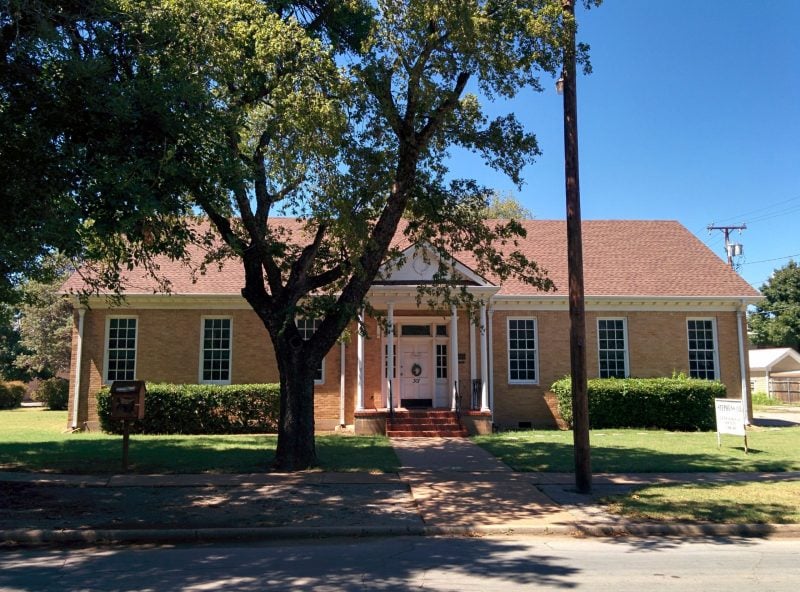
Duncan sits in Stephens County with a population of 22,872 residents. The city is located southwest of Oklahoma City near the Red River.
Most residents own their homes in this community that offers a rural atmosphere. Families and retirees make up a significant portion of the population.
Home prices in Duncan are below Oklahoma’s state average of $161,319. This makes housing more affordable compared to other areas in the state.
The public schools in Duncan rate above average. This provides quality educational opportunities for families with children.
Duncan features several historic sites including Fort Reno Historical Site. The Chisholm Trail Outlet Mall offers shopping opportunities for residents.
The city receives a livability score of 62 out of 100. Duncan ranks in the 51st percentile among all American cities for overall quality of life.
27. Pryor Creek
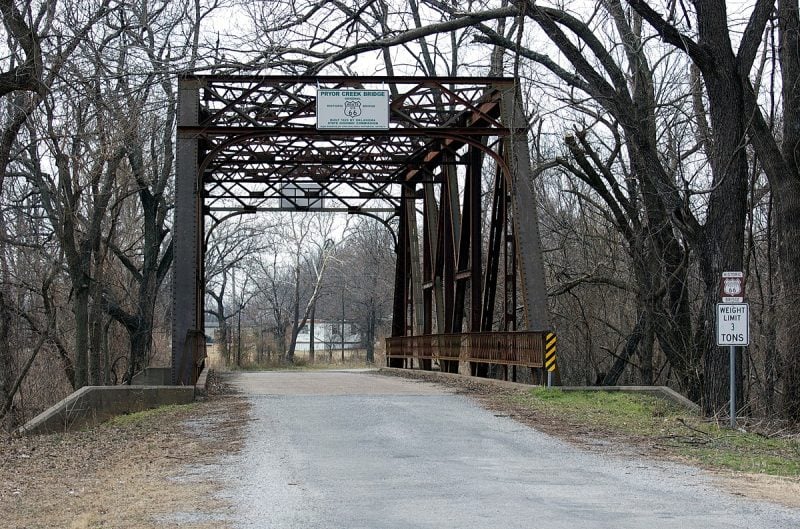
Pryor Creek sits in northeast Oklahoma with a population of approximately 9,400 residents. The city covers over 28 square miles and offers proximity to Tulsa International Airport.
Home prices in Pryor Creek remain below Oklahoma’s state average of $161,319. The typical household earns $42,672 annually, which is lower than the national median.
The city’s location near Tulsa provides residents access to additional recreational and entertainment options. Residents can enjoy both local venues and larger concert halls in the Tulsa area.
Pryor Creek ranks 74th out of 132 places for lowest cost of living in Oklahoma. The poverty rate stands at 18.1%, which exceeds the national average by 29%.
The community offers a small-town atmosphere while maintaining connectivity to larger metropolitan amenities through its strategic location.
26. Enid
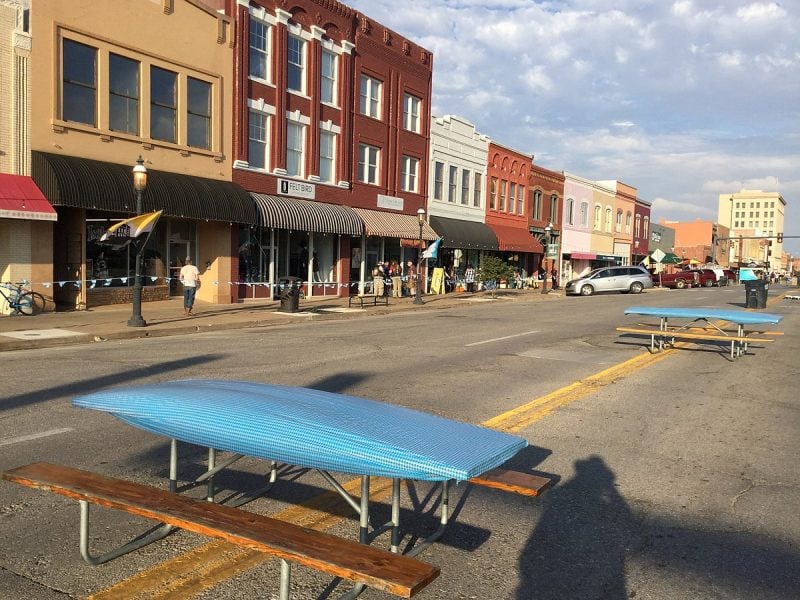
Enid ranks as the fourth best place to live in Oklahoma according to U.S. News and World Report. This achievement places the city ahead of major metropolitan areas like Oklahoma City and Tulsa.
The city serves as the county seat of Garfield County with approximately 50,000 residents. Enid holds the distinction of being Oklahoma’s ninth largest city.
Housing costs remain affordable compared to state averages. Home prices in Enid fall below Oklahoma’s average of $161,319, making homeownership accessible for many residents.
Several neighborhoods offer distinct living experiences. Willow West features upscale homes and quality schools, while Pheasant Run provides family-friendly amenities with parks and walking trails.
Downtown Enid appeals to those seeking urban conveniences with historic character. The area combines city amenities with small-town charm.
Enid’s overall livability score reflects its balanced combination of affordability, amenities, and quality of life factors.
25. Ada
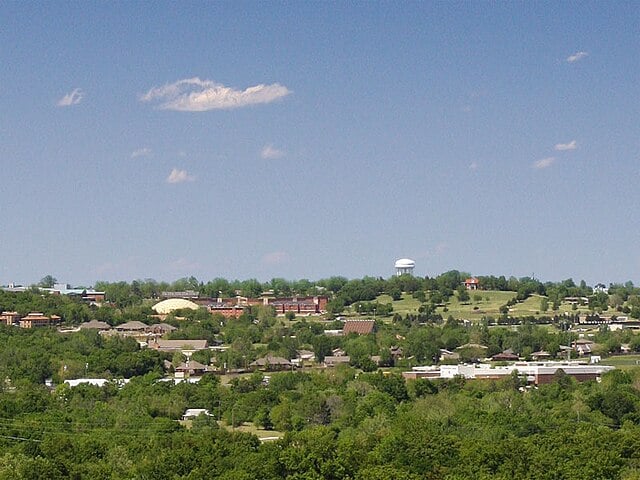
Ada sits in south-central Oklahoma as the county seat of Pontotoc County. The city houses approximately 17,000 residents in a community known for its affordability and suburban atmosphere.
Housing costs represent one of Ada’s strongest attractions. Median home values reach around $94,100, making it among Oklahoma’s most affordable places to purchase property. These prices run 25-30% below those found in larger Oklahoma cities.
The Chickasaw Nation maintains significant influence in Ada. Their presence brings cultural centers and economic development opportunities to the area.
Ada offers abundant parks and green spaces for residents. The community attracts families and young professionals seeking a conservative, small-town environment with sparse suburban characteristics.
Most residents choose to rent rather than buy homes. The overall cost of living remains well below national averages, particularly benefiting retirees and young families establishing themselves.
24. Bartlesville

Bartlesville ranks as one of the best places to live in Oklahoma with a population of approximately 37,000 residents. The city offers a sparse suburban feel where most residents own their homes.
Located in Washington County in northeastern Oklahoma, Bartlesville has strong ties to the oil industry. The city maintains a diverse economy that supports its close-knit community atmosphere.
Residents benefit from a cost of living that rates slightly better than average. The city received an overall livability score of 62 out of 100, reflecting decent quality of life conditions.
Bartlesville provides various amenities and maintains lower crime rates in its better neighborhoods. Housing quality varies significantly across different areas of the city, with some neighborhoods commanding higher home values than others.
23. Muskogee
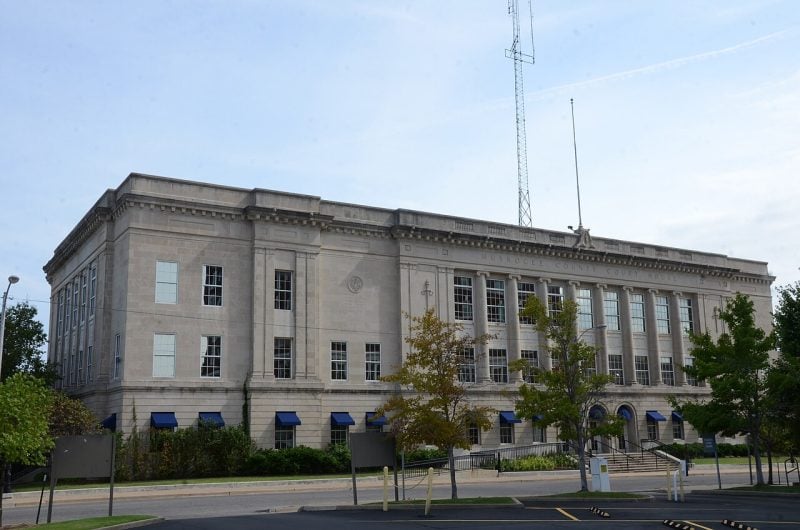
Muskogee sits along the Arkansas River in eastern Oklahoma with a population of approximately 37,000 residents. The city ranks as one of the most diverse places to live in Oklahoma.
Several neighborhoods offer distinct living experiences. Founders’ Place Historic District features beautiful historic homes in a charming setting. Country Club Heights provides upscale living with larger homes and golf course access.
Honor Heights offers scenic living near Honor Heights Park with varied housing options. Grandview Heights attracts families with good schools and residential appeal.
The city maintains a lower cost of living compared to national averages. However, the median household income of $38,218 falls below the national median of $67,500.
Muskogee’s location near rolling hills and woodlands appeals to outdoor enthusiasts. The Arkansas River and nearby wildlife management areas provide recreational opportunities for residents who enjoy nature activities.
22. Guthrie
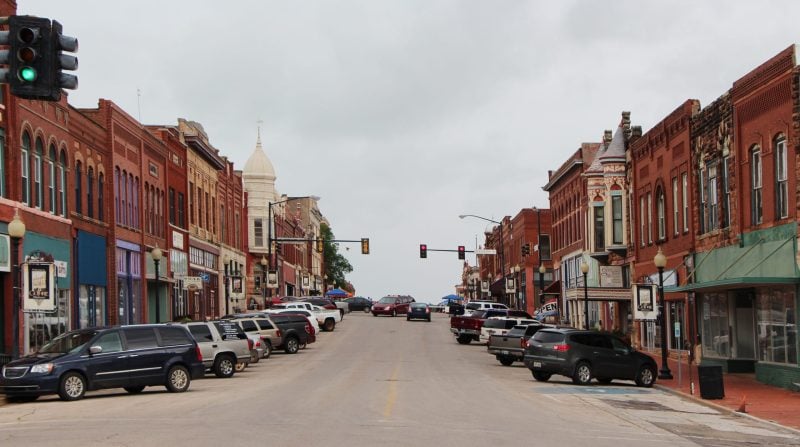
Guthrie offers residents a sparse suburban feel with a population of approximately 11,000 people. The city sits in Logan County and attracts many families and young professionals seeking a quieter lifestyle.
Most residents own their homes in this community. Home prices exceed Oklahoma’s state average of $161,319, reflecting the area’s desirability.
The city provides numerous parks for outdoor recreation. Public schools perform above average, making Guthrie appealing to families with children.
Residents tend to lean conservative politically. The typical household earns $47,542 annually, which falls below the national median income.
Guthrie works well for those prioritizing family-friendly environments over nightlife and dining variety. The poverty rate stands at 18.1%, higher than the national average.
This historic Oklahoma town suits people seeking suburban tranquility rather than urban excitement.
21. Guymon
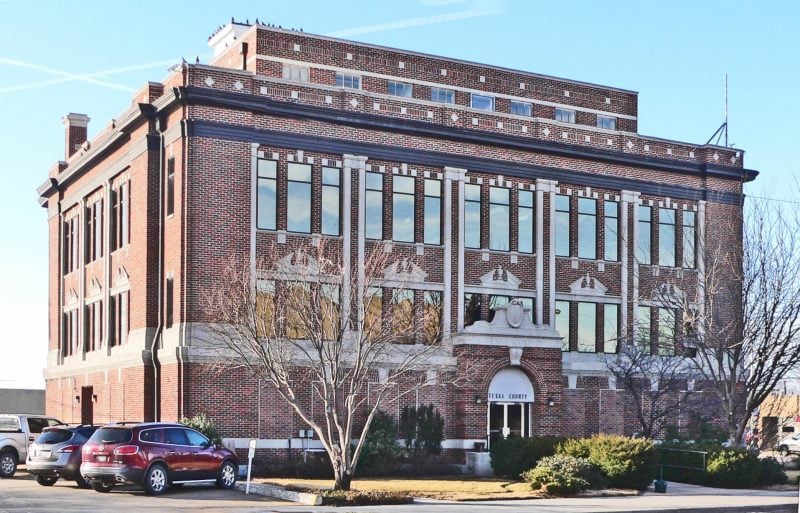
Guymon sits in the Oklahoma Panhandle near the Texas border with a population of approximately 11,000 residents. The city offers a small-town atmosphere with local shops, restaurants, and entertainment venues.
Home prices in Guymon are below Oklahoma’s state average of $161,319. The cost of living receives high marks, earning an A- rating from ranking websites.
The typical household in Guymon earns $51,234 annually, which is lower than the national median of $67,500. The poverty rate stands at 28.7%, which exceeds the national average.
Guymon maintains a B+ rating for crime rate and amenities. The city provides a friendly community environment with various local businesses and services.
The area appeals to those seeking affordable housing and a quieter lifestyle in rural Oklahoma.
20. Del City
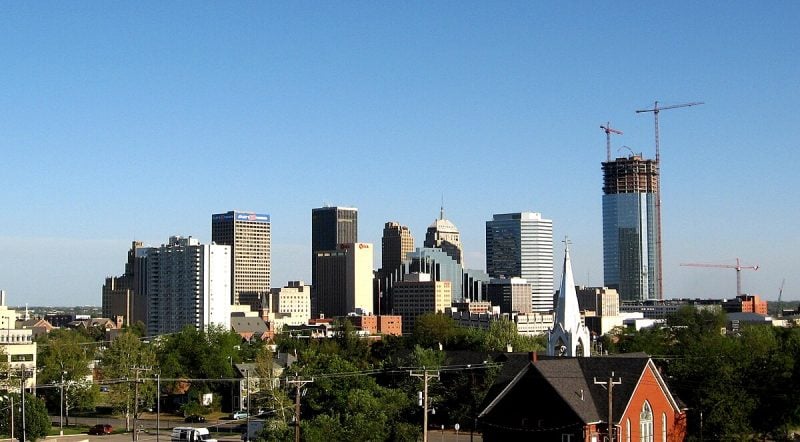
Del City sits in Oklahoma County with a population of approximately 23,000 residents. The city is located just outside Oklahoma City, providing convenient access to urban amenities.
Housing costs in Del City are significantly lower than Oklahoma’s state average of $161,319. This affordability makes it one of the most cost-effective places to live in the state.
The city receives high marks for its cost of living with an A+ rating. Residents benefit from low average housing prices compared to other Oklahoma cities.
Del City offers quality educational opportunities and family-friendly amenities. The community is known for its welcoming atmosphere and diverse lifestyle options.
The city’s proximity to both Oklahoma City and Midwest City provides residents with expanded employment and entertainment opportunities while maintaining small-town charm.
19. Claremore
Claremore offers residents a sparse suburban atmosphere with a population of 19,921. The town sits northeast of Tulsa in Rogers County, providing easy access to larger city amenities while maintaining small-town charm.
Most residents own their homes in this community that attracts families and retirees. The area tends to lean conservative politically and provides a stable residential environment.
The Will Rogers Memorial Museum stands as a notable local attraction. Visitors can also explore the J.M. Davis Arms & Historical Museum for regional history.
The annual Claremore Expo takes place each May, bringing residents together with food and entertainment. This event strengthens community bonds and celebrates local culture.
Claremore’s location along the Arkansas River corridor provides scenic natural surroundings. The town balances residential comfort with cultural attractions and community events.
18. Yukon
Yukon sits just west of Oklahoma City, offering residents small-town charm with big-city convenience. The community maintains a population of approximately 27,000 people.
Bloomberg Business Week recognized Yukon as one of the Best Affordable Suburbs. The typical household earns $72,065 annually, which exceeds the national median income.
Housing costs in Yukon are higher than Oklahoma’s state average of $161,319. The poverty rate stands at 9.8%, which is 30% lower than the national average.
Residents enjoy easy access to Oklahoma City, located just 15 minutes away by car. This proximity provides employment opportunities and urban amenities while maintaining suburban living.
The city features outdoor recreation options including Freedom Trail Park for biking and sports activities. Main Street offers local shops and community attractions that reflect Yukon’s friendly atmosphere and strong community spirit.
17. Stillwater
Stillwater ranks among Oklahoma’s top places to live, with a population of 48,818 residents in Payne County. The city offers a dense suburban atmosphere where most residents rent their homes.
Home to Oklahoma State University, Stillwater maintains a vibrant college town environment. The downtown area provides easy access to campus life and cultural attractions.
Several neighborhoods stand out for different lifestyles. Northwest and West Stillwater appeal to students with walkable access to OSU. Westwood attracts families with quality schools and residential areas.
Teal Ridge features newer construction and golf course amenities. Berry Creek offers larger lots for those seeking more space.
The city sits one hour from both Tulsa and Oklahoma City, providing metropolitan access while maintaining small-town charm. Stillwater’s school district receives high ratings, with 19 private school options available.
Parks and outdoor recreation opportunities abound throughout the community.
16. Bethany
Bethany serves as a suburb of Oklahoma City located in Canadian County. The city maintains a population of approximately 19,292 residents and offers a suburban atmosphere with metropolitan access.
Housing costs in Bethany remain below Oklahoma’s state average of $161,319. This affordability attracts families and individuals seeking reasonable living expenses near urban amenities.
The community is recognized for its friendly atmosphere and diverse housing options. Residents benefit from the city’s proximity to Oklahoma City while enjoying a more relaxed suburban environment.
Bethany’s median household income stands at $51,286, which falls below the national median of $67,500. The poverty rate reaches 15.1%, sitting 8% higher than the national average.
The city combines Southern and Midwestern cultural influences typical of Oklahoma communities. Bethany provides residents with local amenities while maintaining convenient access to larger metropolitan resources.
15. Sapulpa
Sapulpa sits in Creek County as a suburb of Tulsa with approximately 22,000 residents. The city offers a sparse suburban feel where most residents own their homes.
The community features a vibrant downtown area with various shops and restaurants. Residents enjoy access to numerous parks throughout the city.
Sapulpa attracts many families seeking a conservative community atmosphere. The public schools perform above average compared to state standards.
The typical household earns $54,530 annually, which falls below the national median. However, the poverty rate stands at 12.5%, lower than the national average.
Home prices in Sapulpa exceed Oklahoma’s state average of $161,319. The city receives a livability score of 63 out of 100, ranking in the 55th percentile nationally.
Sapulpa combines small-town charm with proximity to Tulsa’s urban amenities.
14. Sand Springs
Sand Springs is a suburb of Tulsa with a population of 19,973 residents. The city offers a sparse suburban feel where most residents own their homes.
The community ranks 17th among Oklahoma’s best places to live, placing ahead of Oklahoma City. This ranking considers employment opportunities, housing, quality of life, education, and health factors.
Housing costs remain affordable compared to state averages. Sand Springs home prices are less expensive than Oklahoma’s average of $161,319.
The city maintains a poverty rate of 11.3%, which is 19% lower than the national average. Typical households earn $60,461 annually.
Sand Springs features above-average public schools and numerous parks throughout the area. The community attracts many families and tends to lean conservative politically.
Local dining options include longtime favorites like Ron’s Hamburgers and Chili, which has served the community since 1975.
13. Moore
Moore ranks as the 42nd best place to live in the United States according to U.S. News & World Report’s 2025 rankings. This rapidly growing suburb of Oklahoma City combines suburban comfort with easy access to urban amenities.
The city’s education system receives high marks with a 7 out of 10 overall rating. Both elementary and secondary schools maintain strong performance levels throughout the district.
Moore’s top neighborhoods include Old Town Moore, featuring historic homes with character. Southmoore offers newer developments with modern amenities, while The Trails provides family-friendly environments with walking paths.
The city benefits from its proximity to Oklahoma City while maintaining a strong sense of community resilience. Moore’s booming local economy and job market contribute to its appeal among families and professionals.
Housing values vary significantly across neighborhoods, reflecting the city’s diverse options for different budgets and preferences.
12. Lawton
Lawton ranks as the second most affordable place to live in America according to Rocket Homes. The city sits in the foothills of the Wichita Mountains with a population of approximately 93,500 residents.
The economy thrives on defense, manufacturing, and retail sectors. Fort Sill military base serves as the area’s largest employer and sits just 10 minutes from downtown.
Several neighborhoods offer distinct living experiences. Cache Road Retail District provides convenient shopping and dining access. Meadowbrook features quiet residential streets with well-maintained homes.
Outdoor enthusiasts benefit from proximity to the Wichita Mountains Wildlife Refuge, located 20 minutes away. The area offers fishing, hunting, and camping opportunities.
The typical household earns $47,690 annually, below the national median. However, the low cost of living helps offset lower wages for many residents.
11. Midwest City
Midwest City ranks 22nd out of all Oklahoma cities with an overall score of 68.3 out of 100. The city offers a suburban atmosphere with convenient access to Oklahoma City and Tinker Air Force Base.
Located just 15 minutes from Oklahoma City, residents enjoy easy commutes to employment opportunities and entertainment. This proximity provides access to urban amenities while maintaining a quieter residential environment.
The city ranks in the top ten places to live in Oklahoma County. It also earned recognition as one of the top five most diverse Oklahoma suburbs.
Midwest City features a tight-knit public school district serving local families. Additionally, 21 private schools operate in the surrounding area, providing educational options for residents.
Housing costs remain below the Oklahoma state average of $161,319. This affordability makes homeownership more accessible for many families considering relocation to the area.
10. Oklahoma City
Oklahoma City earned recognition as the number one big city to live in for 2025-26 according to U.S. News and World Report. The ranking evaluated 859 cities nationwide based on affordability, job market strength, and quality of life.
The state capital houses approximately 670,000 residents and has undergone significant downtown revitalization. This transformation changed perceptions of the city from a dull location to a vibrant metropolitan area.
Oklahoma City offers a booming economy with strong job opportunities across multiple industries. The cost of living remains relatively affordable compared to other major cities.
Residents enjoy attractions like the Myriad Botanical Gardens and Oklahoma City Zoo. The city provides numerous parks and outdoor recreation options for active lifestyles.
The metropolitan area blends Southern and Midwestern hospitality, creating a welcoming culture for newcomers.
9. Tulsa
Tulsa stands as Oklahoma’s second-largest city, combining Midwestern charm with modern urban amenities. The city offers diverse neighborhoods that cater to different lifestyles and preferences.
Midtown attracts residents with its historic homes and walkable streets. The area features local businesses and maintains close proximity to downtown attractions.
Bixby and Sapulpa rank among the most desirable surrounding communities. These areas provide suburban living while maintaining access to Tulsa’s job market and cultural offerings.
The metro area scores well on key livability factors including cost of living and public schools. Crime rates vary by neighborhood, with some areas offering notably safe environments.
Broken Arrow provides family-friendly suburban living. Sand Springs offers a quieter, more intimate community feel for those seeking small-town charm.
Housing costs remain reasonable compared to national averages. The city’s diverse neighborhoods range from artistic districts to traditional family-oriented communities.
8. Norman
Norman earned recognition as a Top 100 Best Place to Live in 2025 by Livability.com. The city stands out for its strong performance in environment, transportation, and economic categories.
Home to the University of Oklahoma, Norman blends college-town energy with family-friendly neighborhoods. This combination creates a vibrant community atmosphere that appeals to diverse residents.
The city ranks among the top 15 most affordable places to live in America according to Rocket Homes. Home prices exceed Oklahoma’s state average of $161,319, reflecting the area’s desirability.
Norman’s school district receives top ratings, with 63 nearby private school options available. The city hosts over 25 annual festivals, including the Norman Music Festival and Medieval Fair.
Located just 30 minutes from Oklahoma City, residents enjoy easy access to additional employment and entertainment opportunities while maintaining small-city benefits.
7. Broken Arrow
Broken Arrow is a thriving suburb of Tulsa with a population of 115,919. U.S. News & World Report recently ranked it as the 12th best place to live in the United States.
The city offers residents a sparse suburban feel with most people owning their homes. It provides all the amenities of a good-sized city while maintaining a comfortable small-town atmosphere.
Broken Arrow features a low cost of living compared to national averages. However, home prices exceed Oklahoma’s state average of $161,319.
The city boasts numerous parks and recreational facilities for residents. Its location in the greater Tulsa metropolitan area provides access to urban employment and cultural opportunities.
Broken Arrow stands out for its high median income and low unemployment rate. The average commute time remains relatively short for residents working in the surrounding area.
6. Verdigris
Verdigris stands out as one of Oklahoma’s premier small towns, offering residents a peaceful rural lifestyle. Located in Rogers County along the Arkansas River, this community of approximately 5,500 people provides an escape from urban stress.
The town maintains a close-knit community atmosphere where neighbors look out for each other. Most residents own their homes, creating stability in the local housing market.
Verdigris attracts both families and young professionals seeking a conservative, family-friendly environment. The area offers scenic countryside perfect for outdoor activities like camping, fishing, and hiking.
Economic conditions remain favorable with a median household income of $69,650, exceeding the national average. The poverty rate sits at just 7.7%, significantly lower than national figures.
Home prices align with Oklahoma’s state average of approximately $161,319, making homeownership accessible. The town ranks as one of the best places to live in Oklahoma according to livability metrics.
5. Mustang
Mustang ranks among Oklahoma’s top places to live according to multiple housing market analyses. The city maintains home prices above the state average of $161,319, reflecting strong demand from residents.
The community offers excellent schools that consistently attract families to the area. Young professionals and retirees also find suitable neighborhoods throughout the city.
Mustang provides abundant recreational opportunities and entertainment options for residents. The city features well-maintained parks and easy access to various amenities.
Safety remains a priority, with crime rates contributing to the city’s desirable reputation. The friendly community atmosphere enhances the overall living experience.
Located in central Oklahoma, Mustang combines small-town charm with suburban conveniences. Residents benefit from proximity to larger metropolitan areas while enjoying a more relaxed pace of life.
4. Owasso
Owasso stands as a premier suburb of Tulsa with a population of approximately 39,013 residents. The city consistently ranks among Oklahoma’s top places to live due to its exceptional safety record and quality of life.
This Tulsa County community earned recognition as one of the safest cities in Oklahoma for 2023. The poverty rate sits at just 6.8%, significantly lower than the national average.
Residents enjoy a sparse suburban atmosphere with abundant parks and recreational opportunities. Most people own their homes in this family-friendly environment.
The typical household earns $66,897 annually, closely matching the national median income. Home prices exceed Oklahoma’s state average of $161,319, reflecting the area’s desirability.
Owasso offers residents access to quality amenities while maintaining affordable living costs compared to many U.S. cities. The combination of safety, parks, and suburban character attracts families and professionals seeking a balanced lifestyle.
3. Bixby
Bixby ranks among Oklahoma’s top places to live with a population of approximately 27,000 residents. The city sits in Tulsa County and offers a suburban atmosphere with small-town charm.
The community boasts excellent public schools that consistently receive high ratings. Families have access to six nearby private school options as well.
Bixby’s poverty rate stands at 5.8%, significantly lower than the national average. The typical household earns $83,955 annually, which exceeds the national median income.
Residents enjoy proximity to Tulsa, located just 30 minutes away for employment and entertainment opportunities. This location provides access to big-city amenities while maintaining a quieter residential environment.
The city receives recognition for its low crime rates and quality of life factors. Home prices exceed Oklahoma’s state average, reflecting the area’s desirability and market demand.
2. Jenks
Jenks consistently ranks among Oklahoma’s top places to live. Money Magazine has recognized the city as one of the best places to live in America.
The city sits in Tulsa County with a population of 19,149. Its strategic location near Tulsa provides residents easy access to metropolitan amenities while maintaining a smaller community feel.
Jenks offers top-rated school districts that attract families. The education system contributes significantly to the city’s reputation for quality of life.
The RiverWalk Crossing entertainment district serves as a major attraction. This area features an amphitheater, movie theater, and over 100 stores for shopping and dining.
Crime rates remain low compared to state averages. Parks like Jenks Riverwalk Park provide outdoor recreation opportunities along the Arkansas River.
Home prices exceed Oklahoma’s state average of $161,319. The higher costs reflect the desirability of the area and quality amenities available to residents.
1. Edmond
Edmond ranks as the 22nd best place to live in the U.S. News & World Report’s 2025-26 rankings. This places the city in the top 10% of more than 850 cities reviewed nationwide.
The city offers highly rated schools that attract families seeking quality education. Home prices exceed Oklahoma’s state average of $161,319, reflecting the area’s desirability.
Edmond provides a mix of neighborhoods to suit different preferences. Deer Creek features newer homes with top-rated schools, while Downtown Edmond maintains a historic small-town atmosphere.
Coffee Creek offers a planned community with diverse housing options. The Arcadia Lake area provides outdoor recreation opportunities for residents who enjoy water activities.
The city maintains a strong sense of community with local businesses that receive high customer ratings. Safety and affordable living contribute to Edmond’s appeal for families, professionals, and retirees.
Quality of Life in Oklahoma
Oklahoma delivers strong quality of life fundamentals through affordable living costs, accessible healthcare and education systems, and diverse recreational activities. The state consistently ranks among the most affordable places to live while maintaining quality services and amenities.
Cost of Living Comparison
Oklahoma’s cost of living remains significantly below the national average. The median home price sits at $146,600, making homeownership accessible to more residents.
Housing costs typically consume 20-25% of household income compared to 30-35% in many other states. Utilities average 15% lower than national benchmarks.
Key Cost Advantages:
- Housing: 25-30% below national average
- Groceries: 8-12% lower than most states
- Transportation: Gasoline prices consistently rank in bottom 10 nationally
- Taxes: No state income tax on military retirement pay
Food and dining costs favor residents, with restaurant meals averaging 20% less expensive than coastal regions. Property taxes remain moderate at 0.90% effective rate statewide.
Healthcare and Education
Oklahoma maintains expanding healthcare networks and improving educational standards. Major cities house quality medical facilities and nationally recognized school districts.
The state operates 140+ hospitals with specialized care centers in Oklahoma City and Tulsa. Rural areas benefit from telemedicine programs connecting patients to urban specialists.
Education Highlights:
- School districts in Edmond and Norman receive top state ratings
- University of Oklahoma and Oklahoma State University anchor higher education
- Community colleges provide affordable workforce training
Healthcare costs run 12-15% below national averages. The state has increased per-pupil education spending by 18% since 2019, improving teacher retention and classroom resources.
Recreational Opportunities
Oklahoma offers year-round outdoor activities across diverse landscapes. The state features 50+ state parks, numerous lakes, and extensive trail systems.
Water recreation thrives at Lake Texoma, Grand Lake, and Keystone Lake. These destinations support boating, fishing, and swimming activities. State parks like Robbers Cave and Beavers Bend provide hiking and camping facilities.
Recreation Assets:
- 200+ public golf courses
- Extensive river systems for kayaking and fishing
- Multiple professional and collegiate sports teams
- Historic Route 66 attractions and museums
Urban areas feature botanical gardens, zoos, and cultural venues. Oklahoma City and Tulsa maintain active arts districts with theaters, galleries, and music venues supporting year-round entertainment options.
Economic and Employment Trends
Oklahoma’s economy has experienced steady growth with a 1.8% job increase and unemployment at 4.1%, well below the national average of 6.0%. The state’s economic foundation rests on diverse industries while embracing the digital transformation affecting modern workplaces.
Major Industries and Job Growth
Oklahoma’s economy centers on energy production, agriculture, and aerospace manufacturing. The oil and gas sector remains a cornerstone, with major companies like Devon Energy and Chesapeake Energy headquartered in Oklahoma City.
The state has diversified beyond traditional energy. Biotechnology and healthcare sectors show strong expansion, particularly in Oklahoma City and Tulsa metropolitan areas.
Manufacturing contributes significantly to employment. Boeing operates a major facility in Oklahoma City, while American Airlines maintains substantial operations in Tulsa.
Agriculture continues as a vital economic driver. Cattle ranching, wheat production, and food processing provide stable employment across rural communities.
The technology sector experiences rapid growth. Companies in software development, data processing, and telecommunications establish operations to benefit from lower costs and skilled workforce availability.
Recent job growth trends indicate positive momentum across multiple sectors. The unemployment rate of 4.1% reflects economic stability and available opportunities for residents seeking employment.
Remote Work and Digital Infrastructure
Oklahoma cities invest heavily in fiber optic networks and broadband expansion. Major urban areas offer reliable high-speed internet supporting remote work arrangements.
Tulsa leads digital infrastructure development through initiatives like Tulsa Remote, which attracted over 3,000 remote workers since 2018. The program demonstrates the state’s commitment to supporting location-independent professionals.
5G networks expand across Oklahoma City, Tulsa, and Norman. These improvements enable seamless video conferencing and cloud-based work applications essential for remote employment.
Rural areas receive infrastructure upgrades through state and federal broadband initiatives. These improvements connect smaller communities to digital economy opportunities previously unavailable.
Co-working spaces emerge in major cities. Facilities in downtown Oklahoma City and Tulsa’s Arts District provide professional environments for freelancers and remote employees.
The combination of lower living costs and improving digital infrastructure makes Oklahoma increasingly attractive to remote workers from higher-cost markets.





